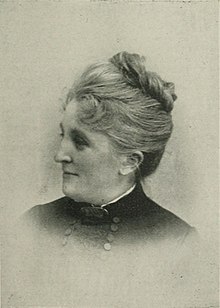
The Grand Army of the Republic (GAR) was a fraternal organization composed of veterans of the Union Army, Union Navy, and the Marines who served in the American Civil War. It was founded in 1866 in Decatur, Illinois, and grew to include hundreds of "posts" across the North and West. It was dissolved in 1956 at the death of its last member, Albert Woolson.

Sons of Union Veterans of the Civil War (SUVCW) is an American congressionally chartered fraternal organization that carries out activities to preserve the history and legacy of the United States Armed Forces veterans who fought during the Civil War. It is the legal successor to the Grand Army of the Republic, the large and influential grouping of Union Army veterans that existed in the decades following the Civil War. Most SUVCW activities occur at the "Camp" or local community level. Camps are grouped into state or regional structures called "Departments". The National organization, with headquarters at the National Civil War Museum in Harrisburg, Pennsylvania, meets annually in a National Encampment that is attended by SUVCW members, known as "Brothers", from all Camps and Departments.

The Commonwealth of Massachusetts played a significant role in national events prior to and during the American Civil War (1861–1865). Massachusetts dominated the early antislavery movement during the 1830s, motivating activists across the nation. This, in turn, increased sectionalism in the North and South, one of the factors that led to the war. Politicians from Massachusetts, echoing the views of social activists, further increased national tensions. The state was dominated by the Republican Party and was also home to many Radical Republican leaders who promoted harsh treatment of slave owners and, later, the former civilian leaders of the Confederate States of America and the military officers in the Confederate States Army.

The Stephenson Grand Army of the Republic Memorial, also known as Dr. Benjamin F. Stephenson, is a public artwork in Washington, D.C. honoring Dr. Benjamin F. Stephenson, founder of the Grand Army of the Republic, a fraternal organization for Union veterans. The memorial is sited at Indiana Plaza, located at the intersection of 7th Street, Indiana Avenue, and Pennsylvania Avenue NW in the Penn Quarter neighborhood. The bronze figures were sculpted by J. Massey Rhind, a prominent 20th-century artist. Attendees at the 1909 dedication ceremony included President William Howard Taft, Senator William Warner, and hundreds of Union veterans.

The Black Hawk County Soldiers Memorial Hall, also known as Veterans Memorial Hall, is a Classical Revival veterans hall located at 1915 Courbat Ct. in downtown Waterloo, Black Hawk County, Iowa. It was built starting in June 1915 and first meeting was held there in December of the same year by the Grand Army of the Republic as a memorial to soldiers who died in the American Civil War. It was listed on the National Register of Historic Places in 1988 due to its architecture and importance in local history.
The J.D. Craven Women's Relief Corps Hall is a historic building located in Macksburg, Iowa, United States. The J. D. Craven Post #198 of the Grand Army of the Republic (GAR) was organized in 1883. They organized an auxiliary, the J.D. Craven Post #322 of the Women's Relief Corps (WRC), in 1898. They built this two-story frame building in 1901 with donated labor and lumber. It is a rare example of a vaulted roof commercial building. In addition to the functions of the WRC, the building has also served as a community building. It also housed the local public school during the 1920–21 school year when their new building was under construction. The WRC continued in existence, even after the GAR folded. When the hall was nominated for National Register of Historic Places, the J.D. Craven Post was still in existence. It was the only one left in Madison County, and one of 34 in Iowa at that time. They added seasonal assistance to the elderly to their aid for veterans. The building was listed on the National Register in 1984.
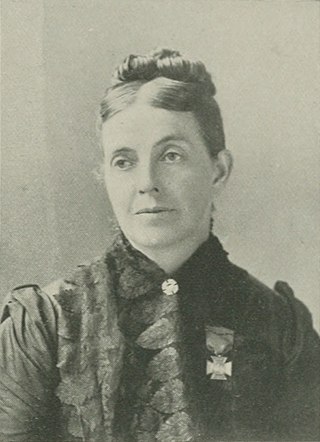
Mary Sears McHenry was an American charitable organization leader who served as the eighth National President of the Woman's Relief Corps (WRC) in 1890, which at the time, was the largest fraternal association in the country.
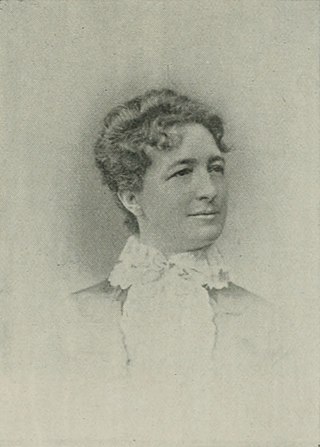
Kate Brownlee Sherwood was an American poet, journalist, translator and story writer of the long nineteenth century, as well as a philanthropist, and patron of the arts and literature. Sherwood was also the founder of the Woman's Relief Corps (WRC) and served as its second president.
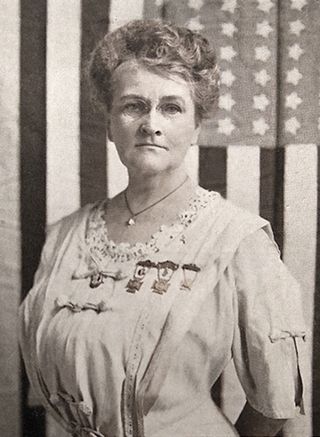
Sarah Isabel Worrell Ball McElroy was an American journalist and newspaper editor. She worked first in the western United States and later in Washington, D.C., where she became one of the first women admitted to the United States Senate Daily Press Gallery. She was active in the Woman's Relief Corps and became the editor of the National Tribune, a weekly publication of the Grand Army of the Republic.

Fanny Titus Hazen served as an army nurse during the American Civil War. Later in life, she was president of the National Association of Army Nurses of the Civil War.

E. Florence Barker was a leader and an activist in the American woman's club movement. She was a co-founder and charter member, of a charitable organization, serving as the first president of the National Woman's Relief Corps (WRC). Elected in July 1883, she understood the need to negotiate cooperation with the parent organization, the Grand Army of the Republic. Barker was an eloquent speaker, and wrote more than a thousand letters during her administration.

Fanny E. Minot was an American public worker, social reformer, charitable organization leader, and clubwoman who was at the front in many lines of public service, including charitable, educational, church and social work. She held a strong interest in all those movements of the 20th-century which brought women into prominence. Minot served as president of the Woman's Relief Corps (WRC) of Concord, New Hampshire, of the State of New Hampshire, and lastly, as the 22nd National President of the WRC. She was also a member and regent of the Daughters of the American Revolution (DAR).

Margaret Ray Wickens was an American public affairs organizer, social reformer, and charitable organization leader who served as tenth National President of the Woman's Relief Corps (WRC). Eloquent, Wickins was called the "Golden-tongued orator of the Woman's Relief Corps". Her executive abilities during the years that she was actively engaged in WRC advanced the organization's patriotic work. As an orator, philanthropist and industrial worker, Wickens had no peer. She served as president of the Kansas State Assembly of Rebekahs, and was active in the temperance movement, filling the role of district president of her Woman's Christian Temperance Union (WCTU) for several years. She was a teacher, a member of the Daughters of the American Revolution (DAR), and a prominent Good Templar. In her later life, she held a number of state positions in Illinois.
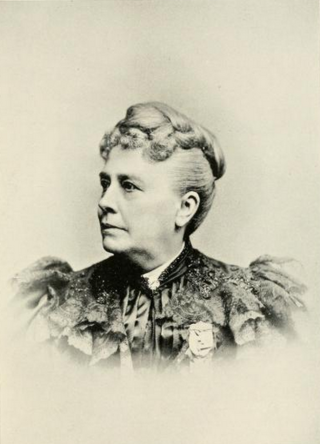
Lizabeth A. Turner was an American charitable organization leader who served as twelfth National President of the Woman's Relief Corps (WRC). Turner was involved in the Andersonville prison work, being chair of the board of managers of the National Reservation at Andersonville. She was also a model financier, and her service as a treasurer of large charitable enterprises was in great demand.
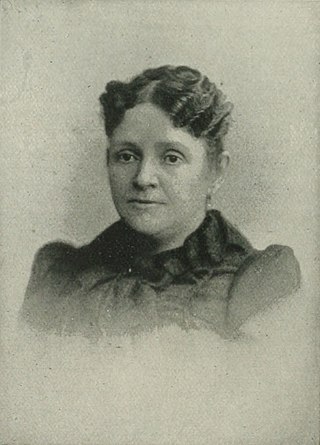
Mandana Coleman Thorp was an American Civil War nurse and singer. She rallied the Union Army troops by singing battle hymns and national airs, and tended to the sick and injured. In 1865, at the Grand Review of the Armies in Washington, D.C., she rode at the head of the 1st New York Dragoons Regiment. After the war, she moved west with her husband, Colonel Thomas J. Thorp, and worked as a public official in Northern Michigan. Around 1900, they settled in Oregon, where she was active in the Woman's Relief Corps.

Mary E. Elliot (1851–1942) was an American writer and lecturer. She was active within the Woman's Relief Corps (W.R.C.) where she served for 50 years as Secretary of the Department of Massachusetts, and was also the organization's National Press Correspondent, 1908. Elliot was a regular contributor to the military department of The Boston Globe. From 1867 to 1885, she was active in temperance work.
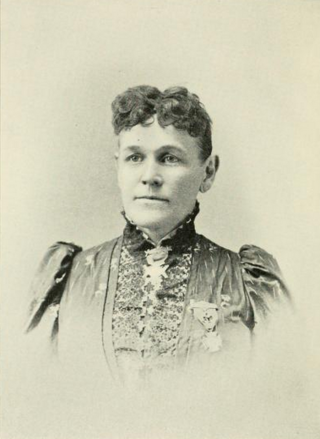
Sarah E. Fuller (1838–1913) was an American philanthropist and social leader. For many years, she was affiliated with the Woman's Relief Corps (WRC). She served as the first President of its Massachusetts Department (1879–1882), and third President of the National organization. Fuller had a record of 40 years' service for the soldiers of the Union Army, having enrolled herself as a worker in the United States Christian Commission during the early days of the Civil War.
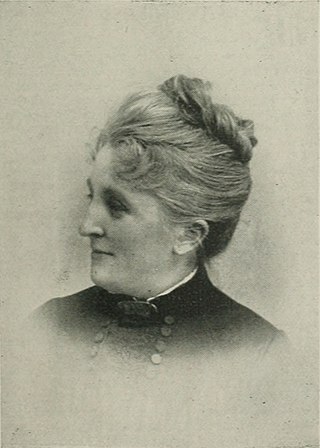
Charity Rusk Craig (1849–1913) was a civic-minded leader of an American charitable organization, serving as the sixth National President of the Woman's Relief Corps (WRC).
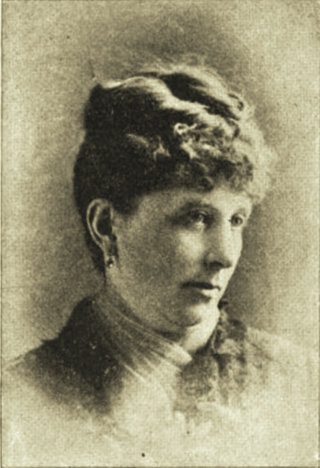
Elizabeth D'Arcy Kinne (1843–1918) was the leader of an American charitable organization, serving as the fourth National President of the Woman's Relief Corps (WRC). She lived in the San Francisco Bay Area for 52 years, making her home in San Francisco the greater part of the time. Kinne was a pioneer clubwoman of Berkeley, California.





